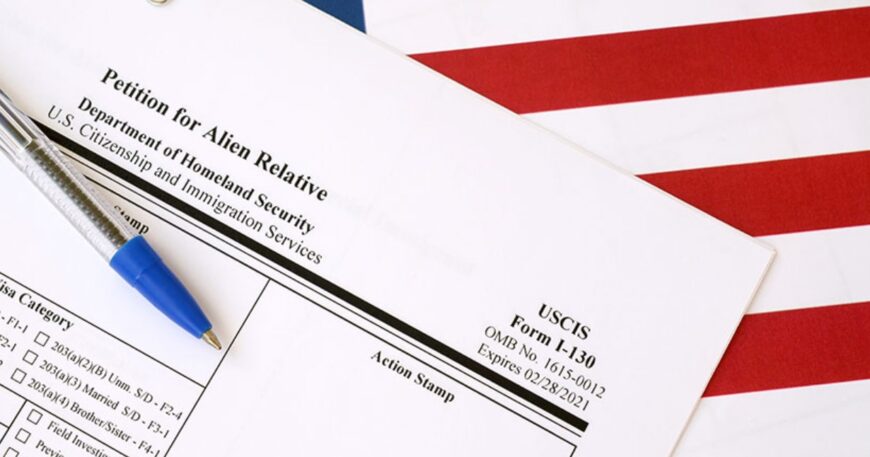Family is often defined by those you share your most precious moments with, such as friends and loved ones who may live abroad or in another country. Maintaining these connections across borders is not only important it’s essential. Suppose you wish to bring relatives from overseas into the U.S. In that case, understanding the process for filing a Petition for Alien Relatives petition is paramount to being fully prepared throughout this journey. We provide this comprehensive guide that will walk you through everything needed to file this document. We’re giving you all the tools and knowledge required to file this petition so you’re well-prepared for every step!
What Is a Petition for Alien Relatives (Form I-130)?
A petition for alien relatives (known as Form I-136) is an official request made to U.S. Citizenship and Immigration Services (USCIS) to establish familial ties between a U.S. citizen or lawful permanent resident and their foreign relative(s). Providing evidence of such familial relations helps ensure your relative obtains a visa allowing them to come or remain in the U.S.
This petition’s primary objective is to establish a valid family relationship. Once approved, your petition allows your relative to apply for an immigrant visa or change their status to become lawful permanent residents—commonly called receiving their “green card.”
Who Can File a Petition for Alien Relatives?
Knowing who can file this petition is critical. In general, U.S. citizens and lawful permanent residents are eligible to submit such a petition. Here’s a breakdown of who may qualify:
Spouses: Citizens or lawful permanent residents may petition on behalf of their spouse.
Children: Unmarried children under 21 can petition, and U.S. citizens can file more complex applications involving married children.
Parents: U.S. citizens aged 21 or over may petition on behalf of their parents if they meet specific requirements.
Siblings: Citizens can also petition on behalf of siblings, though this category often has longer wait times due to annual visa limits.
How to File a Petition for Alien Relatives
Filing an Alien Relative Petition involves several steps. Here’s an easy guide that can help you through them:
Gather Documentation:. Collect all necessary documentation that verifies your relationship with the relative, such as birth certificates or marriage licenses that establish their familial relationship.
Complete Form I-130 Accurately and Comprehensively: It is vital to complete Form I-130 correctly to avoid delays and miscommunication. It needs information about you, the petitioner, and any beneficiaries you may petition on their behalf.
Payment Methods and Fee: The filing fee for Form I-130 Petition-for-Alien-Relatives is $535. For accurate updates regarding current costs and approved payment methods, submit them through the USCIS website.
Submit Your Petition: Once your petition has been completed and all required documents gathered, submit it to the appropriate USCIS address based on its content and your specific case details. This could vary depending on where you live or your circumstances.
Receive a Receipt Notice:. Once your petition has been sent to USCIS, they will send a receipt notice confirming they’ve received it and providing you with a unique receipt number to track its status online.
Attend an Interview (if Required): In certain instances, USCIS may request an interview to establish your relationship further. Be ready with additional documentation and answers regarding how the beneficiary relates to you.
Wait for a Decision: USCIS will review and decide regarding your petition. If approved, they’ll forward it either directly to the National Visa Center (NVC) for further processing (if your relative resides outside the U.S.) or continue with the adjustment of the status process ( if they already reside here ).
Common Challenges and How to Overcome Them
Although the Petition for Alien Relatives process aims at uniting families, petitioners may encounter specific difficulties during its application. Here’s how they can address those obstacles:
Incomplete or Incorrect Information:. Always carefully review any forms or documents before submission, as mistakes could lead to delays or denials of access.
Proof of Relationship is Inadequate: Be sure you submit all necessary documentation and evidence supporting your case, such as affidavits from family members. Additional support could bolster it further.
Visa Backlogs: Unfortunately, specific family categories face long wait times due to annual visa caps. Be patient and remain up-to-date on your petition’s status.
Immigration processes can be complex.
If you require any guidance with filing the Petition-for-Alien-Relatives or have questions or issues with its completion, seeking professional help could be highly beneficial. Immigration attorneys or accredited representatives may offer valuable insight. Ensure all paperwork is filed accurately, and help address potential complications or disputes during this process.
Conclusion
Reuniting with loved ones through a Petition for Alien Relatives can be an immensely fulfilling journey, so understanding and thoroughly preparing are keys to success. Keep in mind that the ultimate aim is to bring your family closer. By paying careful attention to detail, you can make that a reality.
Don’t hesitate to contact us for personalized assistance or inquiries about your situation. At Syed Professional Services, our team is dedicated to guiding you through each stage of the immigration process so that you can focus on being with loved ones rather than worrying about paperwork.




